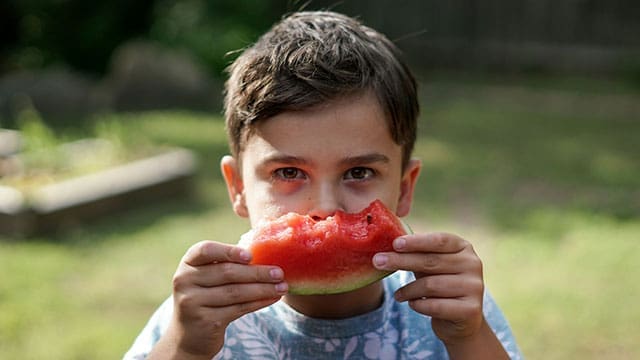Food to eat, and food to avoid, during heatwaves
 As temperatures rise in Eastern Canada, residents will face the sweltering conditions typically seen during Western Canada’s summer heatwaves. While the West is accustomed to summer heatwaves and heat domes, recent rainfall in many areas has offered some relief.
As temperatures rise in Eastern Canada, residents will face the sweltering conditions typically seen during Western Canada’s summer heatwaves. While the West is accustomed to summer heatwaves and heat domes, recent rainfall in many areas has offered some relief.
Heatwaves and droughts significantly impact grocery prices. The recent spike in olive oil and beef prices, caused by ongoing droughts in key regions for grain and olive production in North America and Europe, highlights this trend. Depleted olive inventories and rising cattle feed costs have forced many ranchers to sell their livestock prematurely.
The American Corn Belt, one of the world’s most intensive grain production regions, is a key indicator of the impact of climate on North American agriculture. Iowa State University experts recently highlighted the current ‘neutral’ weather phase as North America shifts from El Niño to La Niña later this summer and fall. They noted an “elevated signal” for warm temperatures in June, July, and August but noted “no clear indication regarding precipitation.” Unfavorable weather patterns in the Corn Belt inevitably lead to increased grocery prices.
While there is no need for alarm, climatic conditions clearly influence food costs. The Canadian dollar has also weakened against the U.S. dollar – declining about six percent over the past year – which could potentially increase the cost of food imports in the coming months.
Produce faces similar challenges. Extreme heat accelerates the wilting of fresh produce, complicates transportation, and strains supply chains. These factors invariably lead to higher prices at the checkout counter.
Heatwaves also significantly alter eating habits. Traditional hearty meals give way to lighter, cooler alternatives that help manage body temperature and hydration levels. Here’s a guide to keeping cool with food when the weather is scorching:
Optimal foods during a heatwave:
- Water-rich fruits: Watermelon, strawberries, cantaloupe, and peaches are ideal because they are high in water, aiding in hydration.
- Vegetables: Cucumbers, celery, lettuce, and zucchini offer refreshment and ease of digestion.
- Cold soups: Gazpacho and cucumber soup provide a cooling alternative to hot meals.
- Salads: Mixed greens and fruit salads deliver nutrition without heaviness.
- Smoothies: Blended fruits, vegetables, and yogurt create a cooling, nutrient-rich drink.
- Yogurt: Plain or with fresh fruits, yogurt is a light, protein-packed option.
- Herbal teas: Iced peppermint or chamomile tea can be both hydrating and soothing.
- Light proteins: Grilled chicken, fish, and tofu are easier to digest in the heat.
- Hydrating beverages: Water, coconut water, and electrolyte drinks help maintain hydration.
Foods to avoid during a heatwave:
- Heavy proteins: Red meat and pork can be difficult to digest and may increase body heat.
- Spicy foods: Hot peppers and spicy sauces can intensify the sensation of heat.
- Fried foods: Items like French fries and fried chicken are heavy and dehydrating.
- Sugary drinks: Soda and sweetened iced tea can contribute to dehydration.
- Caffeine: Coffee and energy drinks can elevate dehydration risks.
- Alcohol: Beer and cocktails, although tempting, can exacerbate dehydration.
- High-fat dairy: Cream and cheese can be heavy and less appealing in the heat.
- Salty foods: Pretzels and salted nuts can increase thirst and dehydration.
Grocers must adapt to a market where consumers seek food suitable for high temperatures. Canadians must also consider food safety more seriously. Heatwaves heighten the risk of contamination, as products leaving coolers and fridges warm up more quickly. Ensuring the integrity of the cold chain is essential for the well-being of oneself, family, and friends.
As Eastern Canada swelters, it is crucial to recognize the broader implications of such weather events and work towards a unified approach to safeguarding our communities and food systems against the escalating climate challenges. We have navigated heatwaves before, and this time will be no different.
Dr. Sylvain Charlebois is senior director of the agri-food analytics lab and a professor in food distribution and policy at Dalhousie University.
For interview requests, click here.
The opinions expressed by our columnists and contributors are theirs alone and do not inherently or expressly reflect the views of our publication.
© Troy Media
Troy Media is an editorial content provider to media outlets and its own hosted community news outlets across Canada.


